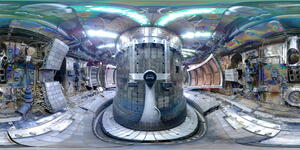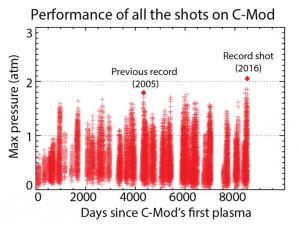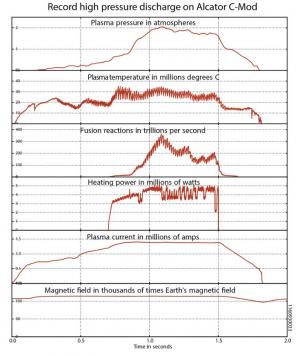Last, record-setting plasma shot for MIT's Alcator C-Mod
On Friday, 30 September, scientists and engineers at MIT's Plasma Science and Fusion Center (PSFC) made a leap forward in the pursuit of clean energy by setting a new world record for plasma pressure on the Alcator C-Mod tokamak.
The results will be presented to the international fusion community by senior research scientist Earl Marmar at the IAEA Fusion Energy Conference that opens today in Kyoto, Japan.
Pressure, which is the product of density and temperature, accounts for about two-thirds of the challenge. The amount of power produced increases with the square of the pressure, so doubling the pressure leads to a fourfold increase in energy production.
Three different strategies for breaching the pressure record were tried by the engineers, technicians, scientists and students present in the control room. Two came very close to reproducing the previous mark, and the third set the ultimate record. Two of the approaches, including the record-setting one, were led by scientists from other laboratories in the US, including the Princeton Plasma Physics Laboratory, the Oak Ridge National Laboratory, and General Atomics in San Diego. Each approach was thoroughly planned before hand and attempted sequentially throughout the day.




